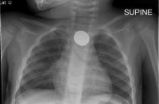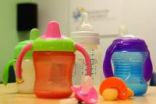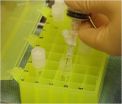(Press-News.org) CHAMPAIGN, Ill. — The sound of silence isn't so golden for consumers, and both marketers and advertisers should take note, says new research from a University of Illinois expert in new product development and marketing.
According to published research from Ravi Mehta, a professor of business administration, ambient background noise turns out to be an important factor affecting creative cognition among consumers.
"We found that ambient noise is an important antecedent for creative cognition," Mehta said. "A moderate level of noise not only enhances creative problem-solving but also leads to a greater adoption of innovative products in certain settings."
In the article, Methta and co-authors Rui (Juliet) Zhu, of the University of British Columbia, and Amar Cheema, of the University of Virginia, explore how a moderate-level of ambient noise (about 70 decibels, equivalent to a passenger car traveling on a highway) enhances performance on creative tasks and increases the likelihood of consumers purchasing innovative products. Similarly, the researchers also studied how a high level of noise (85 decibels, equivalent to traffic noise on a major road) hurts creativity by reducing information processing.
"What we found is that there's an inverted-U relationship between noise level and creativity," Mehta said. "It turns out that around 70 decibels is the sweet spot. If you go beyond that, it's too loud, and the noise starts to negatively affect creativity. It's the Goldilocks principle – the middle is just right."
Using background noise commonly found in consumers' lives, the researchers show that, as noise increases, so does one's level of distraction.
"An increased level of distraction makes you think 'out-of-the-box' – what we call abstract thinking or abstract processing, which is a hallmark of increased creativity," Mehta said. "But when you start to go beyond that moderate level of noise what happens is that distraction becomes so huge that it really starts affecting the thought process. You really can't process information because the distraction is so pronounced. And that is what inhibits creativity.
"So a moderate level of noise produces just enough distraction to lead to higher creativity, but a very high level of noise induces too much distraction, which actually reduces the amount of processing, thus leading to lower creativity."
The research, which has important practical implications for inducing consumer behavior, should be useful for both advertisers and marketers, who typically strive to increase adoption rates of new and innovative products.
"We studied this in a consumer environment because previous research has only considered white noise or pink noise" – a variant of white noise, which sounds like the static buzz of an off-air TV station – "which you don't really find in consumer environments," Mehta said. "So in this case we used everyday multi-talker noise to find out how it affects consumer behavior in a consumption environment. In order to encourage adoption of new and innovative products, marketers might consider equipping their showrooms with a moderate level of ambient noise."
Mehta says the research is not only applicable to consumer research, but also to problem-solving in general.
"This is research that people can relate to almost immediately," he said. "I'm working in a coffee shop – how does the noise in the background volume of the music affect my performance?
It's also valuable for individuals looking for creative solutions to everyday problems, such as planning a dinner menu based on limited supplies or generating interesting research topics to study.
"Our findings imply that instead of burying oneself in a quiet room trying to figure out a solution, walking outside of one's comfort zone and getting into a relatively noisy environment like a cafe may actually trigger the brain to think abstractly, and thus generate creative ideas," Mehta said.
INFORMATION:
Editor's note: To contact Ravi Mehta, call 217-265-4081; email mehtar@illinois.edu.
The article, "Is Noise Always Bad? Exploring the Effects of Ambient Noise on Creative Cognition," is available online.
Research: Too much, too little noise turns off consumers, creativity
2012-05-15
ELSE PRESS RELEASES FROM THIS DATE:
Children's brain tumors more diverse than previously believed
2012-05-15
Paediatric brain tumours preserve specific characteristics of the normal cells from which they originate – a previously unknown circumstance with ramifications for how tumour cells respond to treatment. This has been shown by Uppsala researcher Fredrik Swartling together with colleagues in the U.S., Canada and England in a study that was published today in the distinguished journal Cancer Cell.
Every year, 80-90 children in Sweden are afflicted with brain tumours, a serious form of paediatric cancer. Today, three of four children who receive treatment survive.
The ...
Study finds number of battery-related emergency department visits by children more than doubles
2012-05-15
VIDEO:
In today's technology-driven world, batteries, especially button batteries, are everywhere. A new study shows that every 90 minutes a child younger than 18 years of age is seen in a...
Click here for more information.
In today's technology-driven world, batteries, especially button batteries, are everywhere. They power countless gadgets and electronic items that we use every day. While they may seem harmless, button batteries can be dangerous if swallowed by children. ...
Study examines injuries with baby bottles, pacifiers and sippy cups in the US
2012-05-15
VIDEO:
Sippy cups, bottles and pacifiers are popular items used by many parents for their kids. However, a new study shows that these items can be dangerous if a child is...
Click here for more information.
A new study by researchers in the Center for Biobehavioral Health and the Center for Injury Research and Policy at Nationwide Children's Hospital examined pediatric injuries associated with baby bottles, pacifiers and sippy cups. Researchers found that from 1991 to 2010, ...
Nearly one-tenth of hemisphere's mammals unlikely to outrun climate change
2012-05-15
A safe haven could be out of reach for 9 percent of the Western Hemisphere's mammals, and as much as 40 percent in certain regions, because the animals just won't move swiftly enough to outpace climate change.
For the past decade scientists have outlined new areas suitable for mammals likely to be displaced as climate change first makes their current habitat inhospitable, then unlivable. For the first time a new study considers whether mammals will actually be able to move to those new areas before they are overrun by climate change. Carrie Schloss, University of Washington ...
Scientists make breakthrough in bile duct cancer with discovery of new gene mutations
2012-05-15
Grand Rapids, Mich. (May 14, 2012) - A team of international scientists has made a significant breakthrough in understanding the cause of bile duct cancer, a deadly type of liver cancer. By identifying several new genes frequently mutated in bile duct cancers, researchers are paving the way for better understanding of how bile duct cancers develop. Their discovery is published online in Nature Genetics.
Bile Duct Cancer, or Cholangiocarcinoma, is a fatal cancer with a poor prognosis. Accounting for 10 to 25 per cent of all primary liver cancers worldwide, bile duct cancer ...
Great recession reflux amounts to more hunger among seniors
2012-05-15
URBANA – A new study that looked at the hunger trends over a 10-year period found that 14.85 percent of seniors in the United States, more than one in seven, face the threat of hunger. This translates into 8.3 million seniors.
"In 2005, we reported that one in nine seniors faced the threat of hunger," said Craig Gundersen, University of Illinois associate professor of agricultural and consumer economics and executive director of the National Soybean Research Laboratory who led the data analysis on the study. "So, unlike the population as a whole, food insecurity among ...
New York Stem Cell Foundation scientist grows bone from human embryonic stem cells
2012-05-15
NEW YORK, NY (May 14, 2012) -- Dr. Darja Marolt, an Investigator at The New York Stem Cell Foundation (NYSCF) Laboratory, is lead author on a study showing that human embryonic stem cells can be used to grow bone tissue grafts for use in research and potential therapeutic application. Dr. Marolt conducted this research as a post-doctoral NYSCF – Druckenmiller Fellow at Columbia University in the laboratory of Dr. Gordana Vunjak-Novakovic.
The study is the first example of using bone cell progenitors derived from human embryonic stem cells to grow compact bone tissue ...
Brain circuitry is different for women with anorexia and obesity
2012-05-15
AURORA, Colo. (May 14, 2012) - Why does one person become anorexic and another obese? A study recently published by a University of Colorado School of Medicine researcher shows that reward circuits in the brain are sensitized in anorexic women and desensitized in obese women. The findings also suggest that eating behavior is related to brain dopamine pathways involved in addictions.
Guido Frank, MD, assistant professor director of the Developmental Brain Research Program at the CU School of Medicine and his colleagues used functional magnetic resonance imaging (fMRI) ...
Growing risks from hatchery fish
2012-05-15
Portland, Oregon – May 14, 2012 -- A newly published collection of more than 20 studies by leading university scientists and government fishery researchers in Alaska, British Columbia, Washington, Oregon, California, Russia and Japan provides mounting evidence that salmon raised in man-made hatcheries can harm wild salmon through competition for food and habitat.
"The genetic effects of mixing hatchery fish with wild populations have been well-documented," says journal editor David Noakes from Oregon State University. "But until now the ecological effects were largely ...
Genetic test identifies eye cancer tumors likely to spread
2012-05-15
AUDIO:
The most common form of cancer in the eye can be deadly. New treatments have allowed doctors to preserve vision in patients with ocular melanoma, but sometimes the cancer...
Click here for more information.
Researchers at Washington University School of Medicine in St. Louis have developed a genetic test that can accurately predict whether the most common form of eye cancer will spread to other parts of the body, particularly the liver.
In 459 patients with ocular ...




